Decorating with Nature 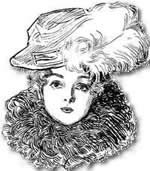 At the turn of the 20th Century, as more and more Americans moved from the country to more urban environments, they tried to bring the nature they had left behind into their homes and even into their fashion. People collected butterflies, dried flowers, and stuffed birds and mammals. Women wore hats decorated with feathers, entire birds, and even small mammals and reptiles! At the turn of the 20th Century, as more and more Americans moved from the country to more urban environments, they tried to bring the nature they had left behind into their homes and even into their fashion. People collected butterflies, dried flowers, and stuffed birds and mammals. Women wore hats decorated with feathers, entire birds, and even small mammals and reptiles!
The Feather Trade 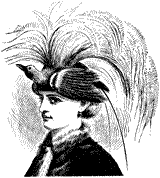 In the late 19th and early 20th century, millions of North American birds were killed for their feathers. Hunters would kill birds and take their feathers and often leave young chicks alone to fend for themselves. Entire populations of terns, herons, and egrets were destroyed all along the Atlantic Coast. In the late 19th and early 20th century, millions of North American birds were killed for their feathers. Hunters would kill birds and take their feathers and often leave young chicks alone to fend for themselves. Entire populations of terns, herons, and egrets were destroyed all along the Atlantic Coast.
Bird Count
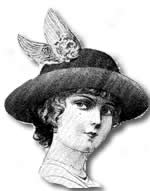 On two days in 1886, ornithologist Frank Chapman walked the streets of New York City and recorded the types of birds he saw on ladies hats. On his walks he counted the wings, feathers, heads, and entire bodies of 174 birds representing 40 different species decorating the hats of ladies, including 21 hats decorated with parts of the common tern. Frank Chapman went on to start the annual Christmas Bird Count in 1890! On two days in 1886, ornithologist Frank Chapman walked the streets of New York City and recorded the types of birds he saw on ladies hats. On his walks he counted the wings, feathers, heads, and entire bodies of 174 birds representing 40 different species decorating the hats of ladies, including 21 hats decorated with parts of the common tern. Frank Chapman went on to start the annual Christmas Bird Count in 1890! |
|
|
The Ladies Revolt 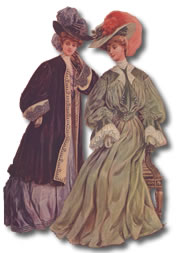 In 1896, wealthy Boston socialite Harriet Lawrence Hemenway (1858-1960) read an article about feather hunting. She was so upset by what the article described that she decided she needed to take action. She contacted her cousin, Minna B. Hall, and together they organized a series of ladies teas. They asked the wealthy ladies who attended these teas to stop wearing hats with feathers. In 1896, wealthy Boston socialite Harriet Lawrence Hemenway (1858-1960) read an article about feather hunting. She was so upset by what the article described that she decided she needed to take action. She contacted her cousin, Minna B. Hall, and together they organized a series of ladies teas. They asked the wealthy ladies who attended these teas to stop wearing hats with feathers.
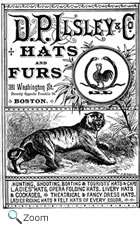 Eventually, they had 900 Boston women enlisted in their cause and boycotting feathered hats. In 1896 women didn't have very much political power; they didn't have the right to vote, and it was difficult to be taken seriously by politicians and other people with power. Harriet Lawrence Hemenway knew she would need the help of men to take her message to more than just women. She convinced leading scientists and other men in Boston to help her form the Massachusetts Audubon Society, the oldest Audubon Society in the country. In 1897, the Massachusetts Audubon Society played a key role in convincing the Massachusetts legislature to outlaw the wild bird feather trade. Soon other Audubon Societies formed around the United States. Many of these societies were started by women. Like Harriet Lawrence Hemenway, the women then recruited men to join the organizations so people would see the groups as more than ladies clubs. These societies played a critical role in changing people's attitudes towards killing birds for their feathers. And it all started because Harriet Lawrence Hemenway read an article that upset her, and then she took action. Eventually, they had 900 Boston women enlisted in their cause and boycotting feathered hats. In 1896 women didn't have very much political power; they didn't have the right to vote, and it was difficult to be taken seriously by politicians and other people with power. Harriet Lawrence Hemenway knew she would need the help of men to take her message to more than just women. She convinced leading scientists and other men in Boston to help her form the Massachusetts Audubon Society, the oldest Audubon Society in the country. In 1897, the Massachusetts Audubon Society played a key role in convincing the Massachusetts legislature to outlaw the wild bird feather trade. Soon other Audubon Societies formed around the United States. Many of these societies were started by women. Like Harriet Lawrence Hemenway, the women then recruited men to join the organizations so people would see the groups as more than ladies clubs. These societies played a critical role in changing people's attitudes towards killing birds for their feathers. And it all started because Harriet Lawrence Hemenway read an article that upset her, and then she took action.
|